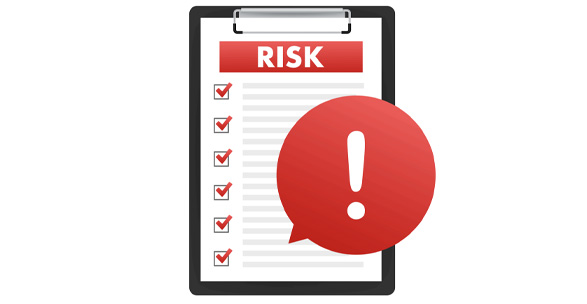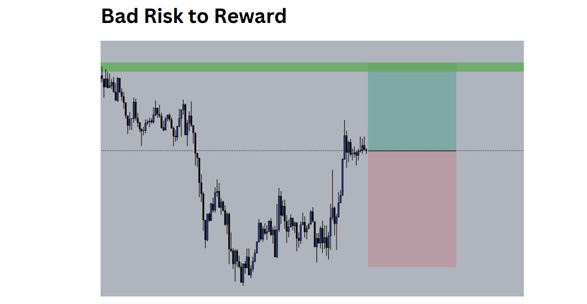College - Risk Management
By now, you might be excited to open your own trading account and start racking up pips. However, before diving in, it’s absolutely ...

Risk Management - Importance of Risk
By now, you might be excited to open your own trading account and start racking up pips. However, before diving in, it’s absolutely essential to understand and apply risk management. Despite being a frequently overlooked topic, risk management is one of the most crucial lessons you'll learn at Trade Tab University. Many new traders enter the market believing they can make millions in just days or weeks. This mindset equates to gambling, not trading. Your aim as a forex trader should be long-term profitability, not short-term gains. While the forex market can provide the freedom to live a boss-free life and even lead to financial independence, it all comes at the cost of time. Time is critical because, through experience, you’ll learn key lessons, including the importance of risk management. Not only does risk management help prevent significant losses, but it also transforms you into a consistently profitable trader over time. With great rewards come great risks, and a professional trader must always apply proper risk management—not occasionally, but always.
Risk management can be boiled down to simple calculations and setting realistic targets. Since it’s your money on the line, you must treat your capital as something to protect by any means necessary. Remember, the more you’re in the market, the more your account is at risk. Achieving consistency requires a strong grasp of effective money management and risk.

Moving Your Stop Loss
If your trade is moving against you but you’re still confident it will go your way, it might be tempting to extend your stop loss. But this is one of the worst habits and the biggest destroyer of traders' accounts. Moving your stop loss is a damaging mistake that’s hard to shake off. Your stop loss should be determined by your technical analysis before entering a trade, just like your take-profit level. Prior to execution, there’s no emotional attachment, and you’re in a state of mental clarity. At this point, you should already know how much you’re willing to lose on the trade. After deciding this, it’s helpful to view the possible loss in three formats: 1.The pip amount you’re risking (e.g., 50 pips) 2.The monetary value at risk (e.g., £250) 3.The percentage of your account at risk (e.g., 2%) Be honest with yourself about the amount you’re willing to lose and write these figures down. Stick to them. How would you feel if you moved your stop loss or removed it altogether, only to return and find your capital nearly wiped out? It’s a costly lesson, and this is why you must not mess with your stop loss. Say it with us: “I WILL NOT MOVE MY STOP LOSS.”

Risk-to-Reward
We apply risk-to-reward in our everyday decisions. You wouldn’t trade your Ferrari for a friend’s Honda Civic, would you? The same principle applies to trading. Too many traders overlook risk-to-reward, often with disastrous results. Risking more than your potential reward makes profitability far less likely. Here’s how the risk-to-reward ratio works:
- Minimum: The minimum acceptable ratio is 1:1. For example, if you risk 100 pips, aim to gain at least 100 pips. However, is may require an 80% success rate.
- Good: A better ratio is 1:2. For instance, risk 100 pips with the potential to gain 200 pips. A 70% success rate may be required here.
- Great: Ideally, aim for a 1:3 ratio. This means risking 100 pips with the potential to gain 300 pips. A 60% success rate may suffice.
Determining Risk-to-Reward
Don’t assume all trades will have a 1:5 risk-to-reward ratio. It all
depends on the accuracy of your technical analysis and how well
you identify key levels. These factors will influence the risk and
reward you can anticipate.

- Bad Risk-to-Reward: Imagine a bullish trade where the next
level of resistance is just a few pips away from the entry point,
but the stop loss is far below the support level. This creates a
backward ratio of 4:1, where you’re risking 400 pips for the
potential of only 100 pips in profit.

- Sensible Risk-to-Reward: In this case, the nearest resistance level is further from the entry point, and the stop level is closer, leading to a better risk-to-reward ratio of 1:4. While risking 100 pips, the potential reward is 400 pips.

Money Management
Money management is critical to every trader’s success. It involves a disciplined approach to choosing the correct lot and contract sizes relative to your account balance. Unfortunately, many new traders view forex trading as a game of hit-and-miss rather than a structured business based on probabilities. Believing forex trading is a get-rich-quick scheme will deplete both your capital and confidence. For long-term profitability, every transaction must be logged, reviewed, and calculated in percentages with a medium-to-longterm outlook. Patience is key to consistency, and compounding can be incredibly powerful. Stick to your trading plan and follow the smart money— your success will come with time.